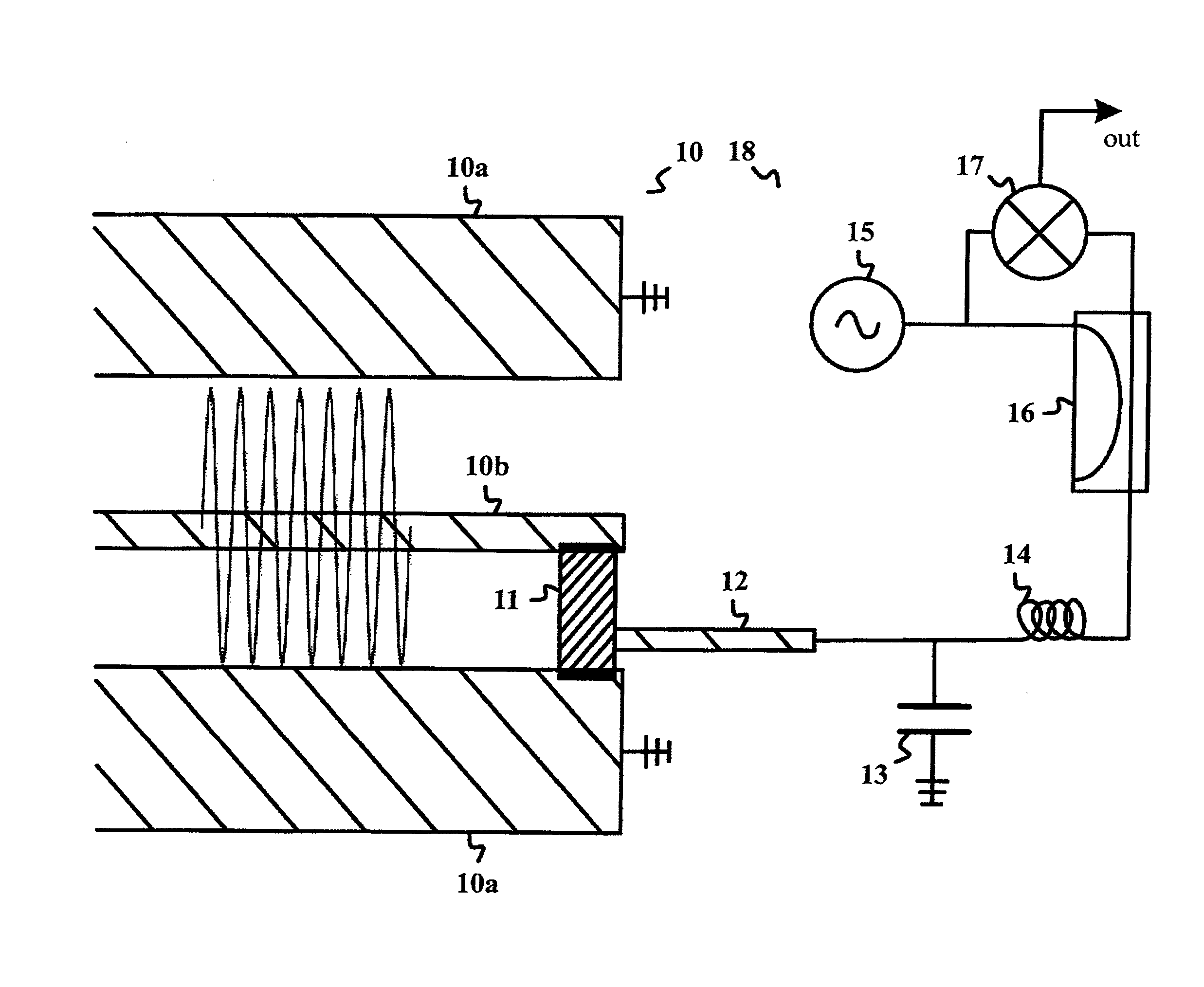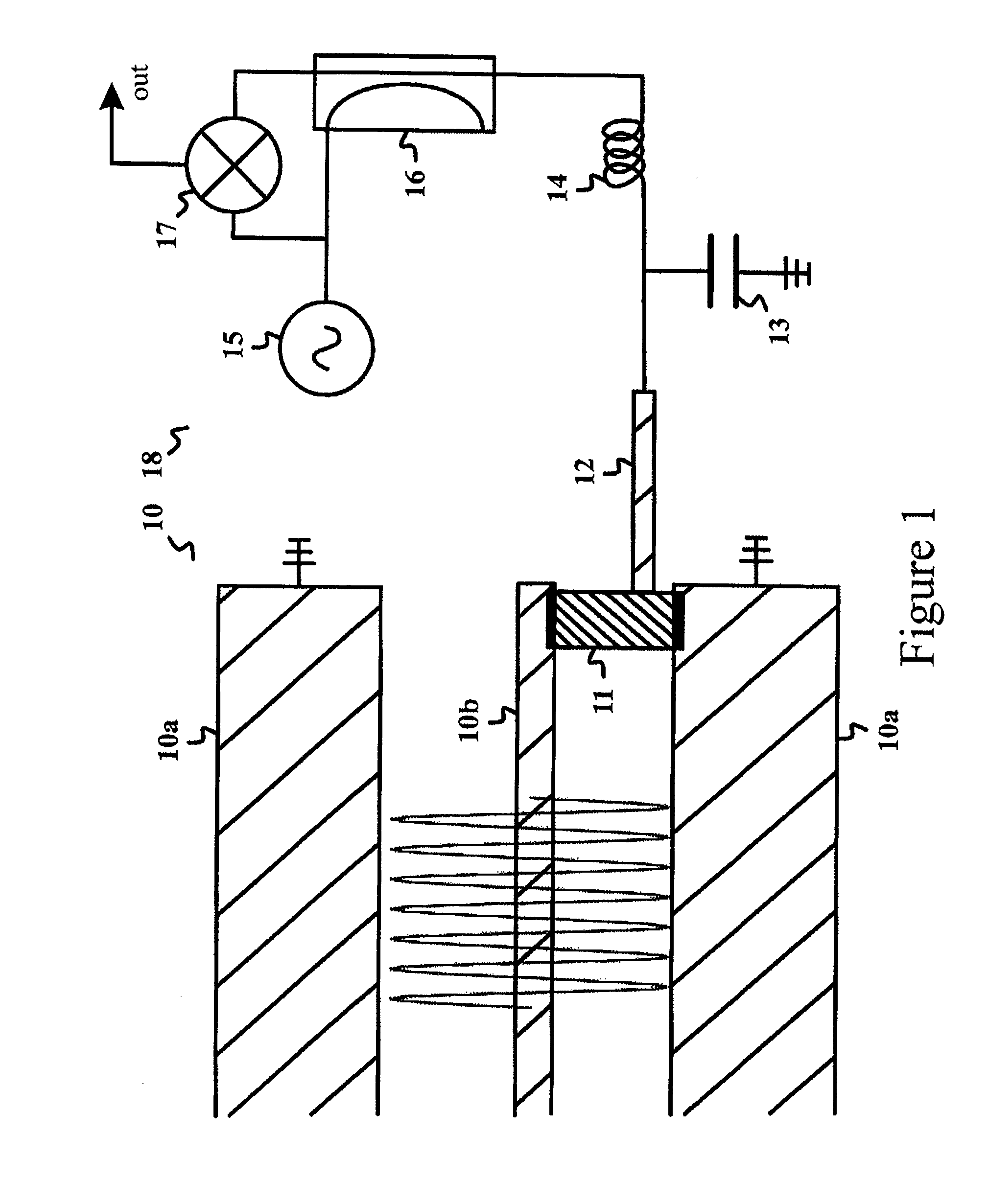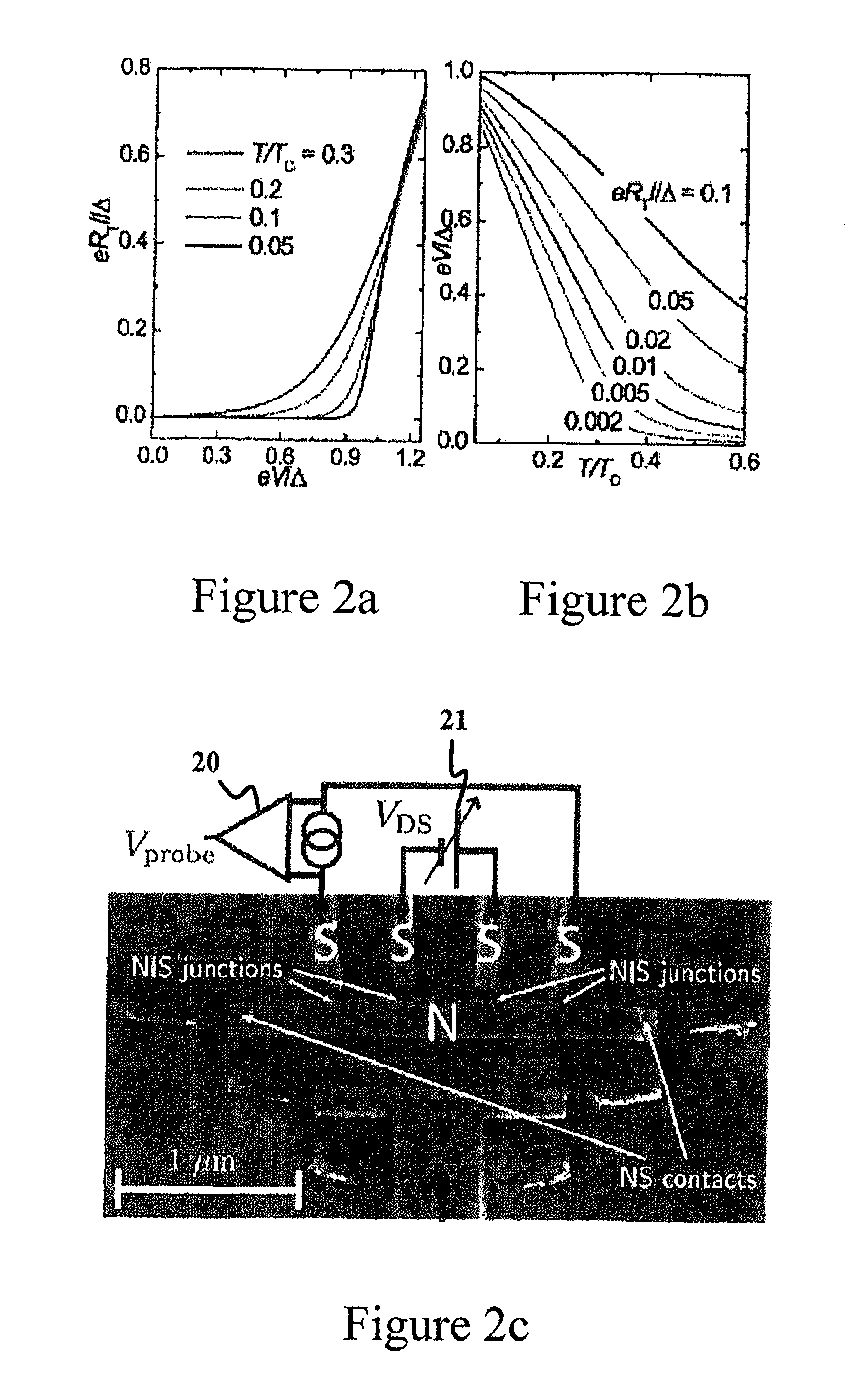Detector of single microwave photons propagating in a guide
a technology of microwave photons and detectors, applied in the field of electric engineering and quantum mechanics, can solve the problems of large detectors, difficult detection, and large number of absorbers, and achieve the effect of good detector sensitivity
- Summary
- Abstract
- Description
- Claims
- Application Information
AI Technical Summary
Benefits of technology
Problems solved by technology
Method used
Image
Examples
Embodiment Construction
[0037]The present invention concerns particularly a frequency range above 10 GHz, i.e. the range of microwave frequencies. There has not been provided suitable detectors for accurate detection of single photons for this frequency range.
[0038]First, the photons must be created, which requires a suitable photon source. After this, it must be possible to manipulate the created photons so as to make them propagate in a controlled fashion in a waveguide, preferably so as to be able to know the moment of emission of a single photon from the photon source. In case the intention is to use the photons for quantum calculation, it is also important to manipulate these photons so as to be able to produce a sufficient degree of photon-photon interactions. Photon sources per se already exist, but the important feature is that photons can be generated in a controlled manner, i.e. in a way where it is known when a single photon is generated and in which direction it will propagate. For example, a s...
PUM
 Login to View More
Login to View More Abstract
Description
Claims
Application Information
 Login to View More
Login to View More - R&D
- Intellectual Property
- Life Sciences
- Materials
- Tech Scout
- Unparalleled Data Quality
- Higher Quality Content
- 60% Fewer Hallucinations
Browse by: Latest US Patents, China's latest patents, Technical Efficacy Thesaurus, Application Domain, Technology Topic, Popular Technical Reports.
© 2025 PatSnap. All rights reserved.Legal|Privacy policy|Modern Slavery Act Transparency Statement|Sitemap|About US| Contact US: help@patsnap.com



